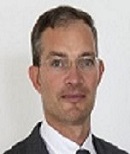Scientific Program

Christian Zehetner
University of Applied Sciences Upper Austria, Austria
Biography:
Dr. Christian Zehetner is currently working as a Professor at the University of Applied Sciences Upper, Austria.
Abstract
The demands on mechatronic products and systems are changing steadily, as well as the design and engineering processes. Looking into the past or into the future, we observe seemingly constant challenges in optimising products and processes: On the one hand, we want to increase quality, precision, robustness, versatility, adaptability, multidisciplinarity, automation, interconnection, integration, intelligence, etc. On the other hand, we want to reduce development time and costs, as well as resource consumption like materials, energy, CO2, etc. To achieve these goals, rapid changes of the design and engineering processes have taken place in the last decades, and further changes are expected for the upcoming ones. Consequently, a constant adaption of education is necessary, as well as an ever-better coordination of study programmes, research, and industrial application. Scope of this paper is first a review on the last two decades of Austrian industrial research projects in cooperation of universities, research institutes, and companies. Exemplarily, a successful application of model-based systems engineering is considered: By applying a digital twin addressing several fields of mechatronics, fully automatic lot-size-one production of sheet metal parts was realized. Based on the experience gained in many years of industrial research projects, the changes of design and engineering processes are discussed, as well as the evolution of mechatronics engineering education. Secondly, an outlook on expected future developments is given based on examples of running industrial research projects. Digitalization, IoT, industry 4.0, etc., require more holistic engineering and management processes. Systems engineering becomes more and more important. Nowadays, there is an enormous amount of software for almost every task in industrial process chains. However, frequently, the lack of or insufficient compatibility of the various software tools cause the most serious bottlenecks, resulting in inefficient processes. As a possible answer, a new virtual engineering platform is presented. The development of the latter has recently started at the University of Applied Sciences Upper Austria. Goal is to integrate open-source and commercial software tools used for design and engineering of mechatronic products and systems. Essential software components of this platforms are Version Control, Issue Tracking, Computer-Aided Design (CAD), Computer-Aided Engineering (CAE) including Finite Element Analysis (FEA), Computational Fluid Dynamics (CFD), Discrete Event Simulation (DES) as well as Augmented and Virtual Reality (VR/AR). In the scope of an upcoming research project, we plan to apply this platform at an industrial partner to manage their engineering processes including regular product and production process audits. With regards to education, it also turned out that this virtual engineering platform is a perfect playground for our students who are contributing with their projects and theses. Consequently, our solution can be a platform for better integrating education, research, and industrial application
- Artificial Intelligence
- Mechatronics and Robotics
- Humanoid Robots
- Robotics in agriculture and Forestry
- Surgical Robots and Medical Robots Systems
- Micro-robots and Nano-robots
- Automation Tools and Its Applications
- Autonomous Technology
- Sensing and Control
- Automotive Mechatronics
- Mechatronics in Energy Systems
- Applications of robotics

